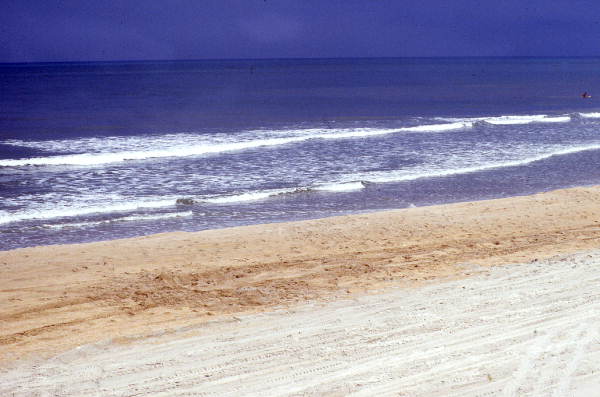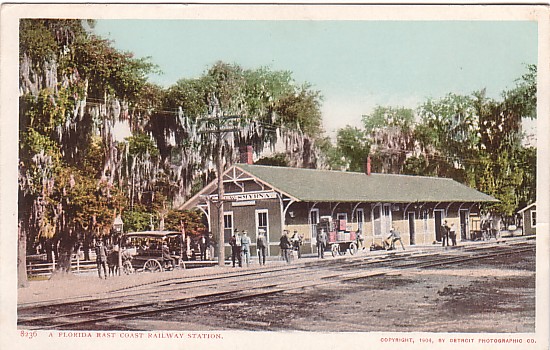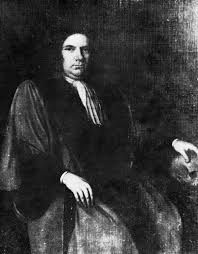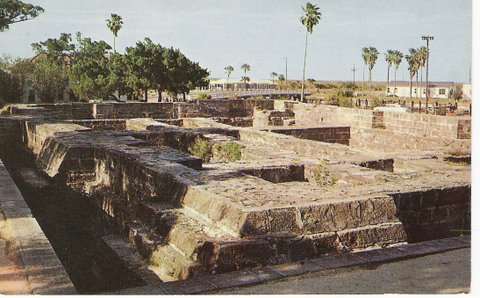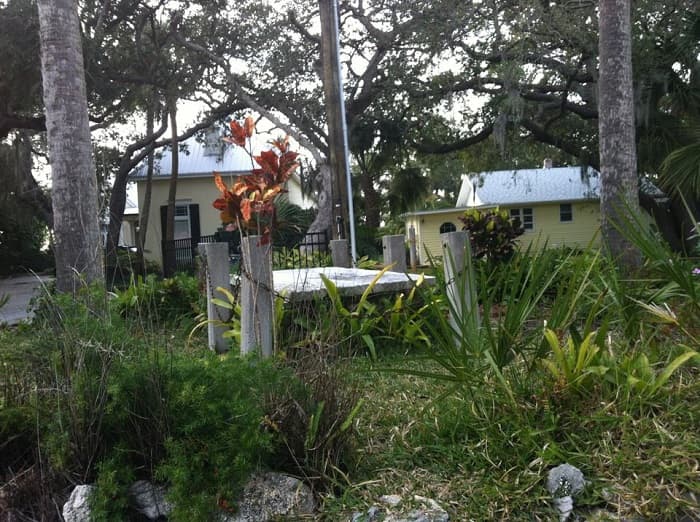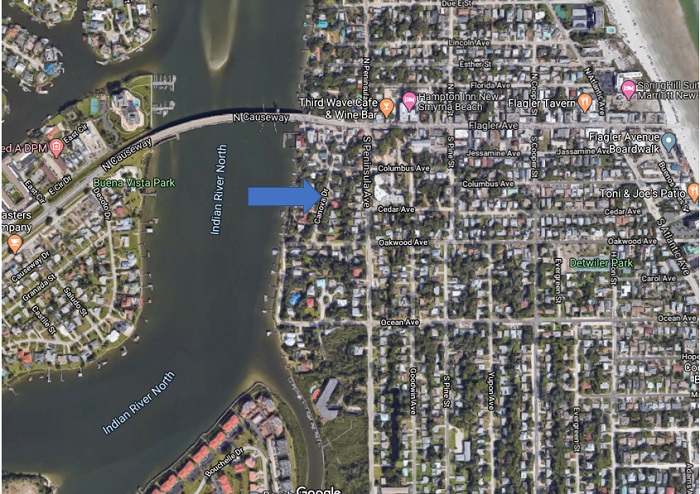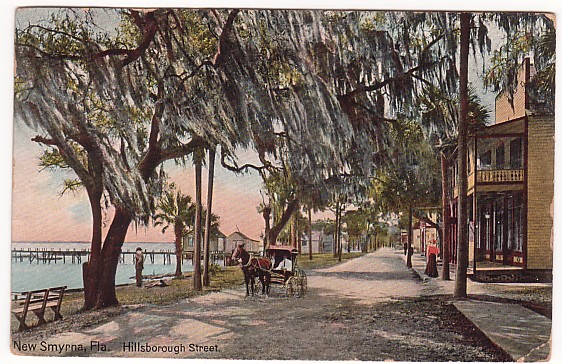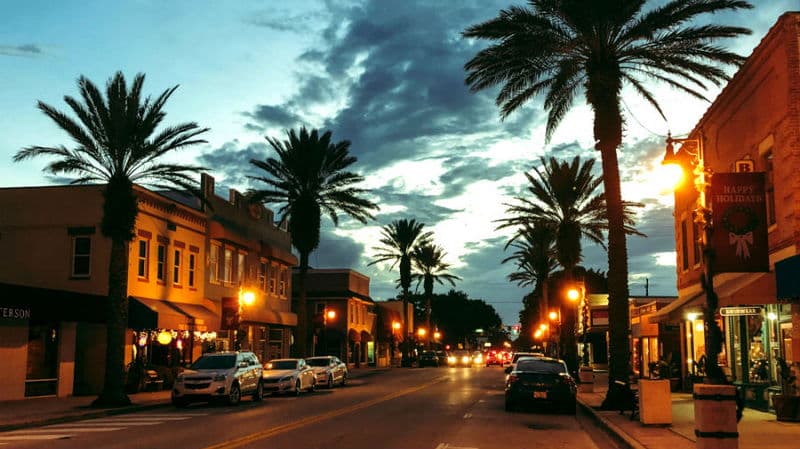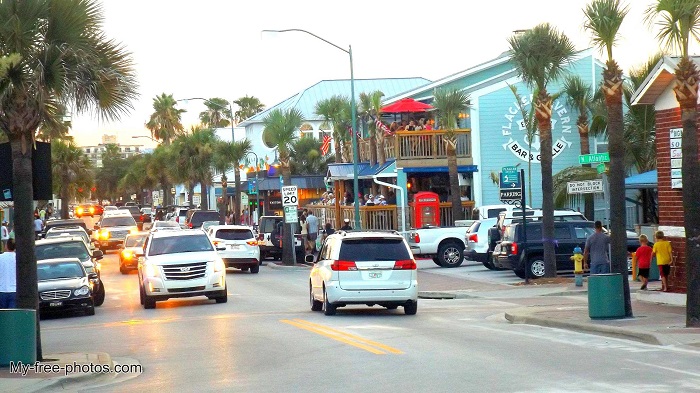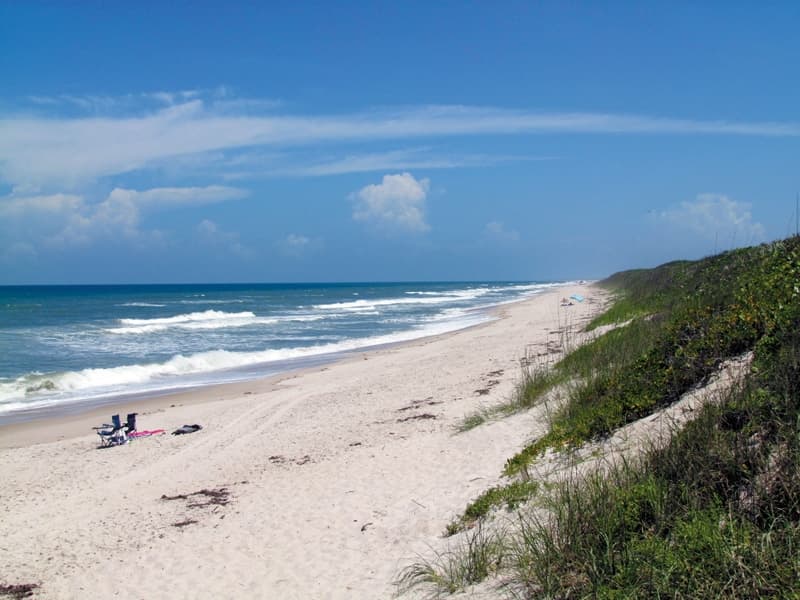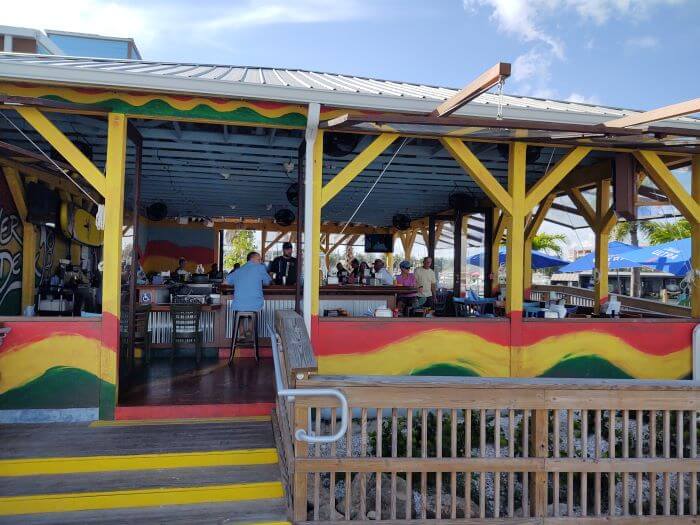- Home
- Florida Towns
- New Smyrna Beach
NEW SMYRNA BEACH, FLORIDA
By Mike Miller Updated October 10, 2025
New Smyrna Beach, Florida Things To Do, Lodging, Dining, & Real Estate At End Of Article
New Smyrna Beach is a beautiful city of 31,120 people
located about halfway between Daytona Beach and Titusville on Florida's
east coast.
It's in Volusia County about one half hour drive south of Daytona, and a bit more than an hour's drive northeast from Orlando.
New Smyrna is the vacation destination of choice for many Central Floridians.
Many condominiums and cottages in this oceanside town are owned by weekenders from Orlando and the surrounding metro area.
The beautiful white sand beaches and deep blue ocean are less than an hour away for most Central Floridians.
HISTORY OF NEW SMYRNA BEACH, FLORIDA
A Scottish doctor, Andrew Turnbull, founded New Smyrna in 1768. He brought with him about 1500 people of Mediterranean descent, many of them from the islands of Minorca and Majorica off the coast of Spain.
Dr. Turnbull promised each of these people their own land after a seven year period of indenture.
Turnbull
tried to establish a new colony, and the early settlers tried to grow
indigo, hemp and sugar cane. They also tried to make rum.
Conditions were really bad in Florida in those days. The settlers were often attacked by Indians and the insects, including gnats and mosquitos, were abundant and miserable.
To make things even worse, it appears that Turnbull reneged on his promise to give land to the settlers.
They asked for help from Patrick Tonyn, the governor of what was now British East Florida, and he said if they would come up to St. Augustine, he would offer protection.
DUMMITT'S TOMB IN NEW SMYRNA BEACH
Douglass Dummitt was a prominent pioneer in the area of New Smyrna Beach, Oak Hill, and North Merritt Island in the mid 1800s.
He had extensive groves and is remembered as the "Father of the Indian River Citrus Industry."
His son Charles was killed in a hunting accident at the age of 16 in what is now beach side New Smyrna Beach.
The grieving father had his son buried at the very site where he was killed. As New Smyrna began to grow, developers tried to get the tomb moved, but were unsuccessful.
A compromise was reached where the road was split to go around the tomb. The map above shows the location of the tomb on Canova Street.
The street was named for Judy Canova, a famous comedian and radio star, who platted the property.
Most of these settlers abandoned New Smyrna and Turnbull en masse and walked north to St. Augustine.
This was in 1777, shortly before St. Augustine was handed off again from the British to the Spanish.
New Smyrna Beach and St. Augustine have both lived under four flags: Spanish, British, American and Confederate States of America.
Dr. Turnbull gave up his colonizing idea and moved to Charleston, South Carolina. The descendants of his Minorcan settlers make up a significant portion of the population of St. Augustine even to this day.
Some of the Minorcan surnames you will see in St. Augustine and New Smyrna Beach today include Acosta, Manucy, Pellicer, Pacetti, Ponce and Canova.
NEW SMYRNA BEACH TODAY
Not much remains in New Smyrna to remind us of Dr. Turnbull and his Minorcan pioneers.
There is what looks like the remains of an old fort or storehouse downtown across from the city marina. It is known today as Old Fort Park.
Nobody seems to know for sure what these ruins are all about.
The most repeated theory seems to be that the settlers were building some kind of house or commercial building but stopped work when they bailed out to St. Augustine.
There are ongoing efforts to determine the origin of these ruins.
The current Town of New Smyrna Beach Florida was incorporated in 1887.
Just 5 years later the Florida East Coast Railway came to town and the population of 150 began a steady growth which continues to this day.
The early growth depended on fishing, citrus and tourism. Some growth has been contributed to moonshining and rum running during the Prohibition era in the 1920's and 30's.
New Smyrna's access to the Atlantic Ocean is through Ponce Inlet south of Daytona Beach, formerly known as Mosquito Inlet.
New Smyrna Beach has some great white sand beaches that can be driven on just like the ones in Daytona.
Like many Florida towns on the Atlantic Coast, New Smyrna has a mainland section and a beach section divided by the Intracoastal Waterway.
NEW SMYRNA BEACH ON THE MAINLAND
U.S. Highway 1 is the main thoroughfare through mainland New Smyrna Beach.
There is the small New Smyrna Beach Municipal Airport in the north part of town and many older residential subdivisions.
The stretch of highway through town has the typical array of car dealerships, fast food restaurants, convenience stores, and other businesses.
About halfway down this stretch, State Road 44 passes overhead east on its way to the beach.
Rather than 44, however, the way into the business district of mainland New Smyrna is by Canal Street that heads east from U.S. Highway 1.
This part of the city is known as the Canal Street Historic District.
There are numerous restaurants and shops on this street. It is also one of the community's leading art districts.
Brannon Center, an event venue, is in this district as well as Old Fort Park with the mysterious ruins mentioned earlier.
Across from the park is the nice city marina and a restaurant overlooking the water.
Washington Street, the north boundary of this district, morphs into the North Causeway that leads out to the beach.
NEW SMYRNA BEACH ON THE BEACH SIDE
After crossing the waterway on the causeway, you enter Flagler Avenue, a narrow east-west street that dead ends in the ocean.
This avenue is lined with shops, bars, and restaurants and has a distinctly beachy feel, as in surf boards, bikinis, and tank tops.
You can enjoy strolling this section, or driving your car on the wide beaches of hard packed sand.
Heading south from this section along South Atlantic Avenue you will see miles of condominiums blocking your view of the ocean.
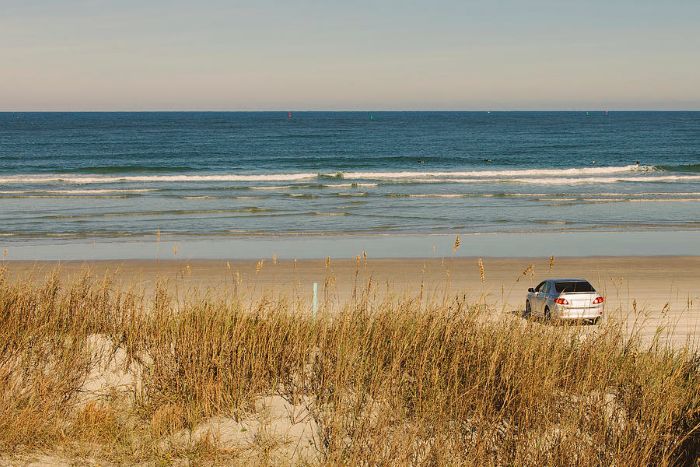 Car on Beach at New Smyrna Beach
Car on Beach at New Smyrna BeachThere are plenty of parking areas and crossovers, however, so you can still enjoy the beach, and there are additional access points to drive your car on the beach.
South Atlantic Avenue ends at Canaveral National Seashore, one of the most unusual national parks in Florida.
This beautiful beach stretches south along the barrier island for 24 undeveloped miles into Kennedy Space Center. A visit to the Seashore is a great way to spend a day.
OUR FAVORITE NEW SMYRNA BEACH RESTAURANT
RIVER DECK TIKI BAR AND RESTAURANT
111 N. Riverside Drive
New Smyrna Beach, FL 32168
Tel: 386-957-4198
River Deck Tiki Bar and Restaurant in New Smyrna Beach is my new favorite place to hang out when I'm in that great little beach city on Florida's east coast.
I love boats, marinas, great food, tasty drinks, waterfront views, and friendly service. When I can get them all in one package, that place ranks high on my list of favorite places.
Read More About River Deck Tiki Bar and Restaurant
THINGS TO DO IN NEW SMYRNA BEACH, FLORIDA
Smyrna Dunes Park
2995 N Peninsula Ave, New Smyrna Beach, FL 32169
This beautiful park is over 184-acres located along the southern shoreline of Ponce de Leon Inlet. With boardwalks that stretch over dunes and provide stunning views of the Indian River, Ponce Inlet, and the Atlantic Ocean, it's a perfect place for a leisurely walk or a picnic.
The park has over 2 miles of wide, elevated, handicapped-accessible boardwalk capped with recycled lumber that is both comfortable and durable. We enjoy watching the diverse wildlife, from sea turtles to birds, making it an ideal spot for nature lovers. Dogs are welcome on the inlet park side but must be leashed.
Marine Discovery Center
520 Barracuda Blvd, New Smyrna Beach, FL 32169 | (386) 428-4828
This center offers an array of interactive exhibits and educational programs about marine life and conservation efforts.
Our favorite activity is the guided boat tours through the Indian River Lagoon, where you can spot dolphins, manatees, and a variety of bird species in their natural habitat. It’s both fun and enlightening for visitors of all ages.
New Smyrna Museum of History
120 Sams Ave, New Smyrna Beach, FL 32168 | (386) 478-0052
This museum is a treasure trove of the area's past, showcasing artifacts and exhibits that tell the story of its Native American heritage, colonial settlers, and development into a modern city.
We enjoy the interactive displays and learning about the local legends and historical figures who shaped New Smyrna Beach.
New Smyrna Beach itself
Enjoy the beautiful beach itself. With its soft, white sand and crystal-clear waters, it's a haven for sunbathers, surfers, and families.
A favorite part is the drive-on beach access, making it easy to find the perfect spot for a day under the sun. The beach's laid-back atmosphere is perfect for those looking to unwind and enjoy Florida's coastal beauty.
Canal Street Historic District
Downtown New Smyrna Beach, Canal St, New Smyrna Beach, FL 32168
This vibrant area is lined with boutiques, galleries, and eateries, reflecting the city's artistic spirit.
On the first Saturday of every month, the district hosts the Canal Street Cruise, where classic cars line the street, and locals and visitors alike gather to enjoy music, food, and community. We love exploring the unique shops and sampling local cuisine.
Sugar Mill Ruins
600 Old Mission Dr, New Smyrna Beach, FL 32168 | (386) 427-2284
These ruins are a fascinating reminder of Florida's early sugar plantation history. Walking among the coquina walls and structures, you can imagine the bustling activity that once took place here.
Our favorite aspect is the self-guided tour that offers insights into the sugar production process and the lives of the people who worked here.
The Little Theatre of New Smyrna Beach
726 E 3rd Ave, New Smyrna Beach, FL 32169 | (386) 423-1246
This community theater offers a variety of productions, from comedies and dramas to musicals and children's theater. We enjoy the intimate setting, which allows for a close-up experience of the performances and the talent of the local actors.
The Hub on Canal
132 Canal St, New Smyrna Beach, FL 32168 | (386) 957-3924
This artistic space offers workshops and classes in painting, photography, jewelry making, and more. Our favorite part is the gallery, which showcases the work of local artists and provides a glimpse into the region's vibrant arts scene.
The Eldora Statehouse
7611 South Atlantic Avenue, New Smyrna Beach, FL 32168 | (386) 428-3384
This historic house is located at the southern end of Eldora Rd in the Canaveral National Seashore. It offers a peek into the lives of early settlers in the area.
There are preserved rooms and informative exhibits. We enjoy the peaceful surroundings and the scenic views of the Mosquito Lagoon.
Norwood's Eatery & Treehouse Bar
400 E 2nd Ave, New Smyrna Beach, FL 32169 | (386) 428-4621
This unique restaurant offers delicious seafood dishes and a unique dining experience in a treehouse setting. Vegan dishes are also available.
Our favorite time to visit is in the evening, when the lights create a magical ambiance, perfect for a special night out.
Canaveral National Seashore. Located where the road ends south of New Smyrna Beach, you will enjoy 24 miles of pristine beach with no development as far as the eye can see.
New Smyrna Beach has been dubbed the "shark attack capital of the world" due to its particularly high frequency of incidents. This might be attributed to the large population of smaller sharks, like the blacktip reef shark, which are more likely to bite out of curiosity rather than aggression. So be careful!
ALL ABOUT NEW SMYRNA BEACH, FLORIDA
INTERACTIVE MAP NEW SMYRNA BEACH FLORIDA

Florida is the fastest-growing state in the United States and also the fastest-changing. If you see anything in this article that has changed or is in error, please let me know.
Thousands of Florida fans subscribe to our free daily Ezine, Florida Heritage Travel and we have 130,000 followers on Facebook.
By Mike Miller, Copyright 2009-2025
Florida-Back-Roads-Travel.com
Florida Back Roads Travel is not affiliated with or endorsed by Backroads, a California-based tour operator which arranges and conducts travel programs throughout the world.
